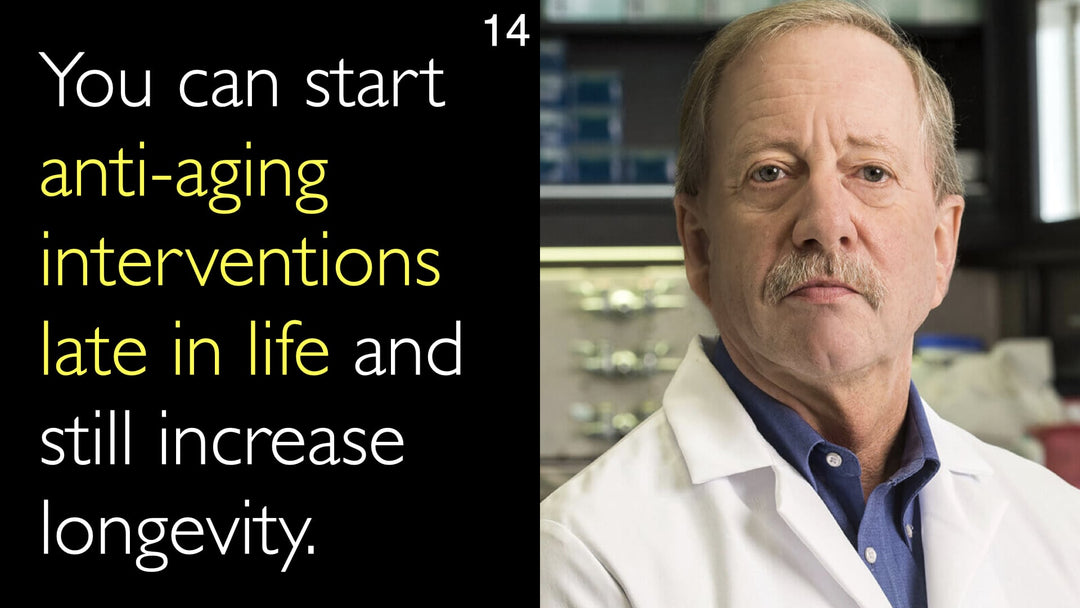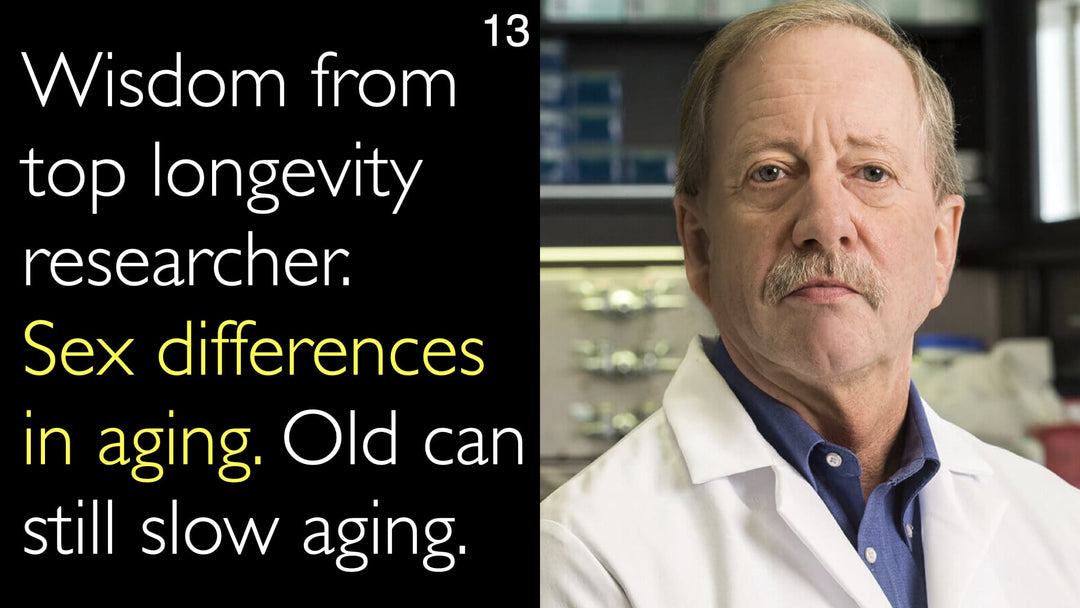Leading expert in aging and lifespan research, Dr. Steven Austad, MD, explains how laboratory animal studies lack real-world relevance. He argues that standard lab conditions fail to mimic natural environmental challenges. Dr. Steven Austad, MD, states that over 80% of genes operate on daily rhythms not replicated in labs. He advocates for a major rethink in how animal research colonies are managed to improve applicability to human health.
Improving Animal Research Models for Human Aging and Disease Studies
Jump To Section
- Natural vs Lab Animal Studies
- Environmental Challenges in Nature
- Daily Rhythms and Gene Expression
- Laboratory Conditions Flaws
- Rethinking Animal Research Models
- Full Transcript
Natural vs Lab Animal Studies
Dr. Steven Austad, MD, highlights critical differences between animal studies in natural habitats versus laboratory settings. He questions the direct applicability of lab findings to human conditions, using the example of beta-amyloid accumulation in great apes. These apes develop amyloid plaques similar to humans but do not get Alzheimer's disease. This discrepancy underscores the complexity of translating animal research to human medicine.
Dr. Anton Titov, MD, initiated this discussion by asking about correlation between animal observations and human applicability. The conversation reveals that species similarities alone do not guarantee predictive value for human diseases. This challenges fundamental assumptions in biomedical research.
Environmental Challenges in Nature
Natural habitats provide environmental challenges that laboratory settings completely eliminate. Dr. Steven Austad, MD, explains that animals in nature face weather extremes, disease exposure, and numerous survival pressures. These natural challenges create selection pressure for maintaining health and resilience. Animals in nature must remain healthy to survive predation and environmental stresses.
Laboratory animals lose these survival capabilities through generations of protected breeding. Dr. Steven Austad, MD, notes that lab-released animals wouldn't survive a day in natural conditions. This fundamental difference affects how we interpret aging and disease research findings.
Daily Rhythms and Gene Expression
Dr. Steven Austad, MD, reveals that over 80% of genes follow daily rhythms and patterns of activation. These circadian rhythms are crucial for proper biological function and health maintenance. In natural environments, light changes occur gradually with accompanying temperature fluctuations. These natural transitions properly synchronize biological clocks and gene expression patterns.
Laboratory conditions use abrupt light-on/light-off transitions that fail to mimic natural diurnal cycles. This artificial environment disrupts normal gene regulation patterns. Such disruptions may significantly alter research outcomes in aging and disease studies.
Laboratory Conditions Flaws
Standard laboratory practices create overly simplified environments that lack ecological validity. Dr. Steven Austad, MD, explains that researchers historically standardized conditions to simplify experiments. Laboratories maintain constant temperatures and eliminate infectious agents. While useful for control, these practices remove natural stressors that shape animal biology.
Dr. Steven Austad, MD, emphasizes that current lab animals represent a very different biological system than their wild counterparts. The interview with Dr. Anton Titov, MD, explores how these artificial conditions might skew research results. The absence of natural challenges means lab animals never develop the same resilience mechanisms as wild animals.
Rethinking Animal Research Models
Dr. Steven Austad, MD, calls for a fundamental reconsideration of how laboratory colonies are managed. He advocates reintroducing realistic environmental conditions into animal research settings. This approach would better mimic the challenges animals face in natural habitats. Such changes could significantly improve the translational value of animal studies to human medicine.
The conversation with Dr. Anton Titov, MD, highlights the need for more ecologically valid research models. Dr. Austad suggests that adding realism back into experiments is crucial for meaningful aging research. This paradigm shift could lead to more accurate predictions about human aging processes and disease development.
Full Transcript
Dr. Anton Titov, MD: Professor Austad, you do a lot of studies across animal species. You wrote two books regarding aging, lifespan, and healthspan in different animal species. How real is the correlation between what we observe in nature and its applicability to humans?
I'll give an example. For example, beta-amyloid accumulates in great apes, but they don't get Alzheimer's as far as I understand. That's probably true, but we are very similar to great apes. So what do you think of the correlation between what we learn in animals and how it is applicable to humans?
Dr. Steven Austad, MD: Yes, I think we really need to rethink the way we do our animal research. One of the things that I like about studying animals in their natural habitat is that living in nature has its challenges. It has difficulties with the weather, disease exposure, and many other things.
We know that animals are successfully living in nature because they're healthy. As soon as their health starts to decline, they're dead. Now, we don't get any of these effects in the laboratory.
In the laboratory, animals don't get extremes of heat and cold. We don't even get them normal daily rhythms. So the way we try to emulate nature—we know now that over 80% of our genes are turned on and off in daily rhythms and patterns.
What we don't do in the laboratory is we turn off the lights, we turn on the lights, and we assume that we're mimicking the sort of biological rhythms in nature. But in nature, lights aren't turned on and off. First of all, the light goes away slowly. It comes on slowly.
Changes in temperature accompany it. That changes slowly but dramatically. We don't mimic any of that in the laboratory. We try to keep infections out of our laboratory colonies as much as possible.
There was some reason to do all this to standardize conditions at one point because it simplifies our experiments. But at some point, we need to start adding more realism back into our laboratory experiments.
The animals that we use now in the laboratory—if we release them into nature, they wouldn't survive a day. They've lost all of those capabilities. That means it's a very different kind of thing that we're studying in the laboratory. They could deal with real-world problems.
So I think it's time for us to rethink the way our laboratory colonies are managed.







